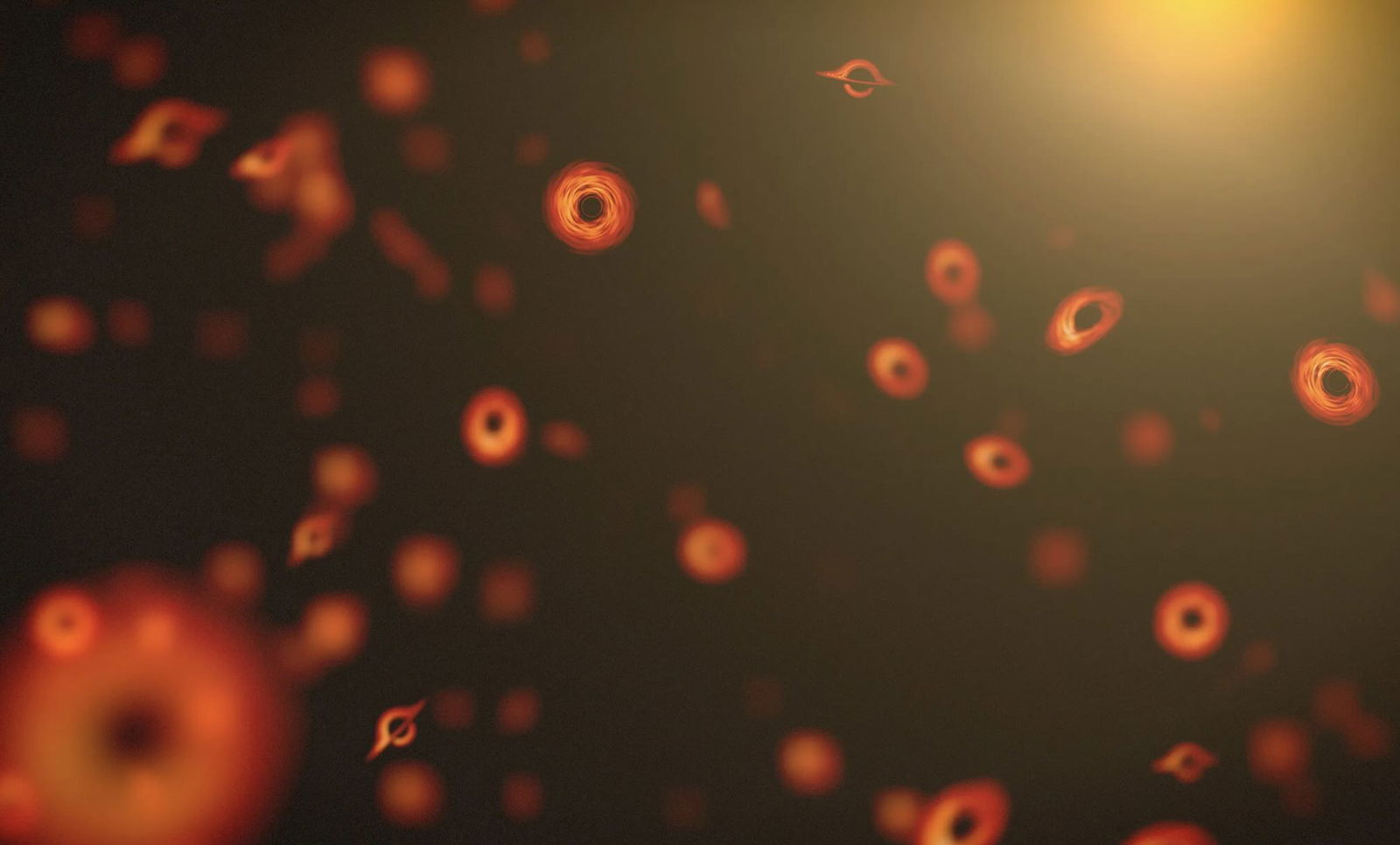Physicists are reshaping our understanding of black holes in new research that maps theoretical structures within them known as “supermazes,” offering an unprecedented look at their microstructure.
Black holes remain one of the universe’s most fascinating features, since they are so gravitationally dense that nothing—including light—can escape them. Now, a team of physicists report how supermazes within black holes, a concept drawing from string theory, could play a crucial role in helping us understand the structural elements of these cosmic singularities at the microscopic scale.
Offering a more detailed picture on black holes and their relationship to other cosmological phenomena, Nicholas Warner, a professor of astronomy and mathematics at the USC Dornsife College of Letters, Arts and Sciences who co-authored the new study, says the team’s findings could help to fill in some of the missing theoretical pieces that Einstein’s theory of general relativity can’t explain about black holes.
“General relativity is a powerful theory for describing the large-scale structure of black holes, but it is a very, very blunt instrument for describing black-hole microstructure,” Warner said in a statement.
Supermazes, by contrast, help to carry theoretical physics approaches to unraveling the black hole mystery beyond where Einstein left off with general relativity, offering physicists a chance to explore the microscopic structure of black holes. This is important because black holes must have an extensive microstructure when considered in terms of quantum gravity.
Supermazes and Fuzzballs
Substituting more conventional notions of black holes with objects known in string theory as “fuzzballs” is one way of achieving this. Warner and his colleagues argue that fuzzballs can be constructed theoretically using supermazes of physical objects that exist in a higher spacetime dimension.
The incredible result, Warner says, is the creation of an object that exhibits its entire structure, all while still behaving like a black hole.
Using general relativity to achieve what he and his team seek to accomplish would be like using a camera armed with just a single pixel to capture an image of Michelangelo’s famous painting, The Last Judgement, which would provide only a pinpoint of color from the painting.
“Our earlier work gave us a picture with maybe 1,000 pixels: outlines of structures and some of the shading,” Warner says. By contrast, employing supermazes is comparable to “having many, many billions of pixels enabling us to admire the masterpiece in detail.”
Building a Black Hole in M-Theory with Supermazes
Warner and the team’s work focuses on M-theory, which unifies all the consistent versions of superstring theory in modern physics by positing that the fundamental “strings” of the universe aren’t one-dimensional, but instead exist as membranes, otherwise known to physicists as “branes,” in higher dimensions. These objects can traverse multiple spatial dimensions, featuring surfaces that hold an important place in both M-theory and string theory.
Warner and his team focused their study on the intersecting systems of M2-branes and M5-branes (the latter being five-dimensional when compared with the two-dimensional former variety) all in relation to supergravity as an approximation of M-theory.
“We think of the maze as the ‘substrate’ upon which all the information about whatever made the black hole, or ever fell into it, can be encoded,” Warner explained. Their investigations into the maze function at the heart of the intersections between branes offered useful insights for the team into how mazes can reproduce black hole entropy, and may potentially even describe their microstates.
Maze Functions and Supergravity Solutions
Although the intersections of branes are nothing new in the study of string theory, these ideas are taking on new life in Warner and his colleagues’ work, offering new perspectives, as well as unique geometries that can be used to detail the behavior of black holes. Newly presented in the team’s research, however, is a unique mathematical construc called a “maze function” that they use to characterize solutions for intersecting systems of M2 and M5 branes in supergravity.
“Maze functions play a pivotal role in linking the brane configurations to supergravity solutions, which in turn provide a new way to explore black-hole microstates,” Warner said. According to the team’s findings, this maze function has to conform to equations similar to the famous Monge-Ampère equation which relates to M2 and M5 brane intersection geometry and other characteristics.
“The maze function is the billion-pixel camera that can give us a deep and detailed picture of the microstructure of black holes,” Warner said, adding that the team’s work is a first step toward developing a more complete description of the microstructure of brane black holes in string theory.
The team recently reported their findings in a study in the Journal of High Energy Physics.
Micah Hanks is the Editor-in-Chief and Co-Founder of The Debrief. He can be reached by email at micah@thedebrief.org. Follow his work at micahhanks.com and on X: @MicahHanks.

